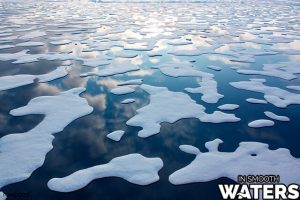What is the smallest ocean in the world the arctic

What is the smallest ocean in the world? The Arctic.

When we think about the vastness and might of our oceans, the Arctic Ocean might not be the first that comes to mind. However, this smallest ocean in the world has a unique charm and significance that sets it apart from the rest. Let’s dive into the intriguing characteristics of the Arctic Ocean and discover what makes it truly remarkable.
Located primarily in the Arctic region of the Northern Hemisphere, the Arctic Ocean spans an area of about 14.05 million square kilometers. To give you some context, this is roughly 1.5 times the size of the United States. Despite its relatively small size compared to other oceans, the Arctic Ocean plays a crucial role in regulating the Earth’s climate and supporting diverse ecosystems.
A Sea of Ice

One of the defining features of the Arctic Ocean is its icy nature. The region is covered by a layer of frozen seawater known as sea ice, which extends across the ocean’s surface. This sea ice is crucial for its role in reflecting sunlight, helping to cool the Earth by reducing the amount of heat absorbed by the ocean. It also acts as a platform for various species, including polar bears, seals, and walruses, providing them with essential habitats.
An Ocean of Abundant Life
Despite the harsh conditions, the Arctic Ocean is teeming with life. It is home to a rich range of marine species, both large and small. Whales, such as belugas and bowheads, grace its waters, while fish like Arctic cod and Greenland halibut thrive beneath the surface. Not to mention the stunning variety of seabirds that migrate to the Arctic Ocean during the summer months. These resilient creatures have adapted to the extreme cold and form complex food webs, keeping the ecosystem in delicate balance.
Climate Change and the Arctic Ocean
In recent decades, the Arctic Ocean has faced unprecedented change due to global warming. Rising temperatures have led to the rapid melting of sea ice, affecting both the environment and indigenous communities that rely on traditional hunting and fishing practices. The retreat of sea ice has also opened up new opportunities for various industries, leading to increased human activities in the region.
Protecting the Arctic Ocean
As awareness of climate change grows, conversations surrounding the protection of the Arctic Ocean become increasingly important. Efforts are underway to establish marine protected areas and regulate activities such as fishing and shipping to ensure the sustainability of this fragile ecosystem. By working collectively, we can strive to safeguard the smallest ocean in the world and preserve its unique beauty and significance for future generations.
For more information about the Arctic Ocean, you can visit this source.
Tags
Share
Related Posts
Quick Links
Legal Stuff

